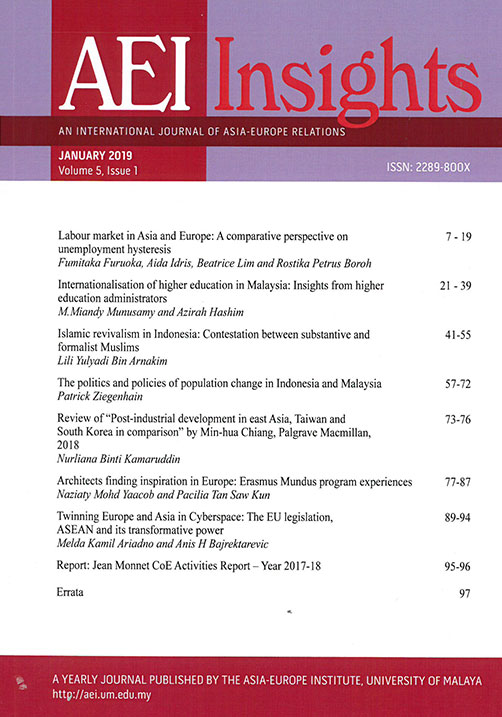Labour market in Asia and Europe: A comparative perspective on unemployment hysteresis
Keywords:
Asia-Europe employment, labour market outcomes, non-standard labour, unemployment hysteresis, labour market institution, employment protectionAbstract
The main problem of the European labour market is its high unemployment. By contrast, Asian
countries do not face the high unemployment. In order to explain this differences, this paper
aims to compare labour market outcomes, particularly unemployment rates, labour market
institutions and unemployment protection mechanisms, in Asia and Europe. Despite numerous
studies on this topic using econometric analysis, there is still lack of descriptive analysis of
labour market in this important topic in the labour economics. Thus, this paper uses some
descriptive statistics to explain the differences in the labour market between Asia and Europe.
Results of secondary data analysis indicate that there is a remarkable difference in labour
market outcomes between the two regions, especially in unemployment rates, where the rates
for Asia are relatively lower than those for Europe. The main feature of Asian unemployment
is that unemployment rates are quite stable, whereas for Europe they are persistently high. In
Europe, unemployment rates tend to increase when a country faces an economic crisis and will
reduce when the economy recovers from the crisis. However, the level of reduction often does
not reach pre-crisis rates. This appears to be mainly due to provisions of the generous
unemployment benefits in Europe, where policymakers often have to make a paradoxical
balance between labour market flexibility and employment protection. By contrast, in Asian
countries, unemployment rates do not seem to be affected by economic conditions. Some
possible factors contributing to this trend include a weaker unemployment protection
mechanism, a strong existence of an informal sector and a prevailing culture of self-help in the
region. As a conclusion, Europe appears to face a greater problem with unemployment
hysteresis while Asia’s the severity of the unemployment problem is less because the effect of
economic crisis on unemployment tends to be smaller in Asia than in Europe.




